1. Castelpetroso
Castelpetroso is a village of just under two thousand inhabitants, in the province of Isernia, which has very ancient origins (the village was formed in Norman times), and in part still preserves ancient vestiges, but it is most famous for its religious history: according to tradition it was in fact the scene of apparitions of Our Lady in the late 19th century, and this was enough for the local population to erect a shrine, which has become one of the symbolic places of Molise, namely the Sanctuary of Our Lady of Sorrows of Castelpetroso, a grandiose basilica erected in neo-Gothic forms. The construction was quite troubled and went on for over a century: in fact, the basilica was consecrated only in 1975. Today it is a popular place of worship, recognizable even from afar because of its high dome (it reaches 52 meters in height) and its two bell towers.
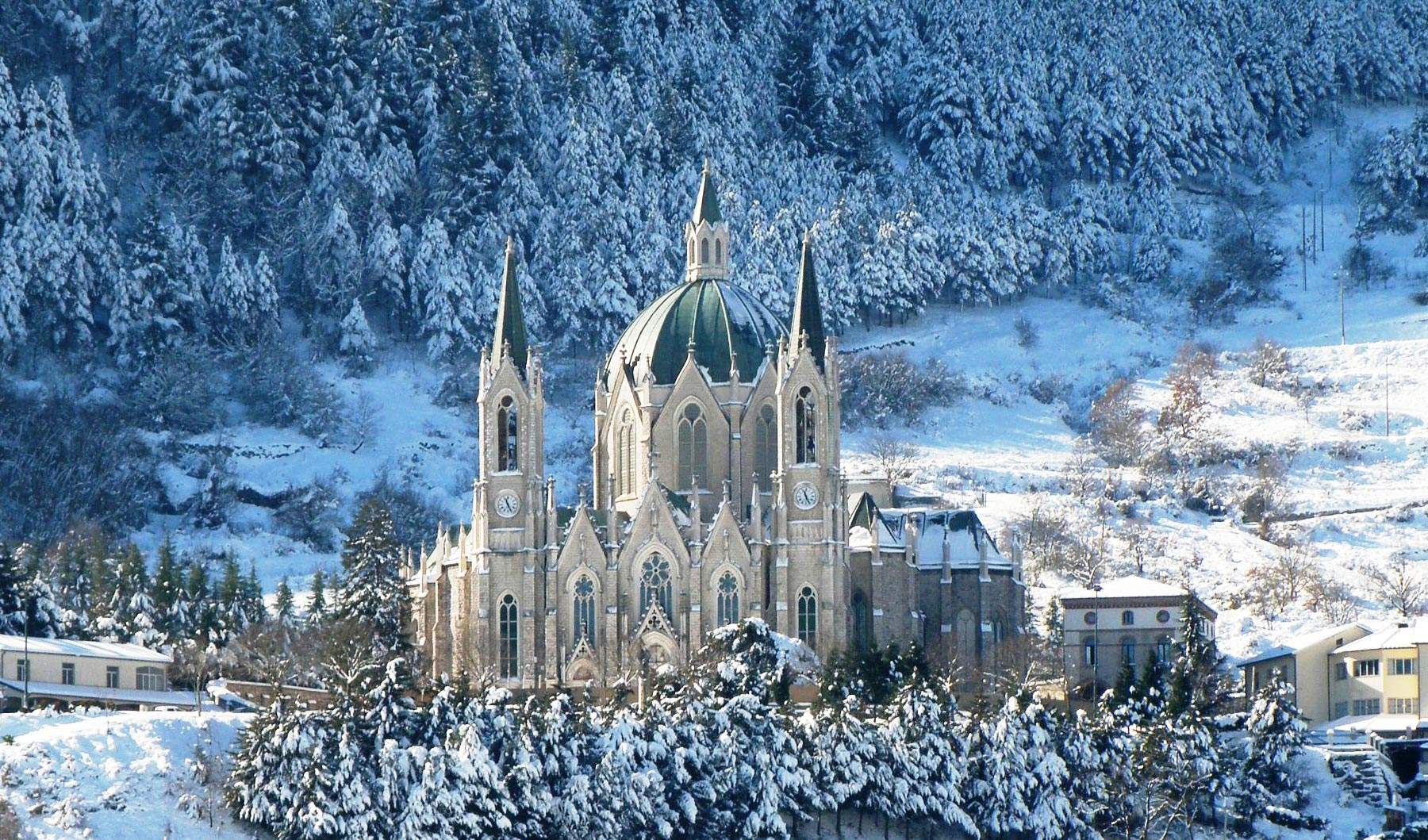 |
| The shrine of Our Lady of Sorrows in Castelpetroso |
2. Fornelli
An ancient hamlet first mentioned in the year 981, it has been struck by numerous earthquakes throughout history, but buildings and evidence of the earliest times partly survive (as does the urban fabric, which has remained unchanged since the Middle Ages), starting with the walls surrounding the hamlet (it is one of the best preserved in the region), and towers that have survived the wounds of time (Fornelli is also known as “the hamlet of the seven towers”). The castle, restored during the eighteenth century, has the appearance of an imposing fortified palace (the building, in 1744, hosted Charles III of Bourbon during a stay in the area), and also worth seeing is the eighteenth-century mother church dedicated to St. Michael the Archangel.
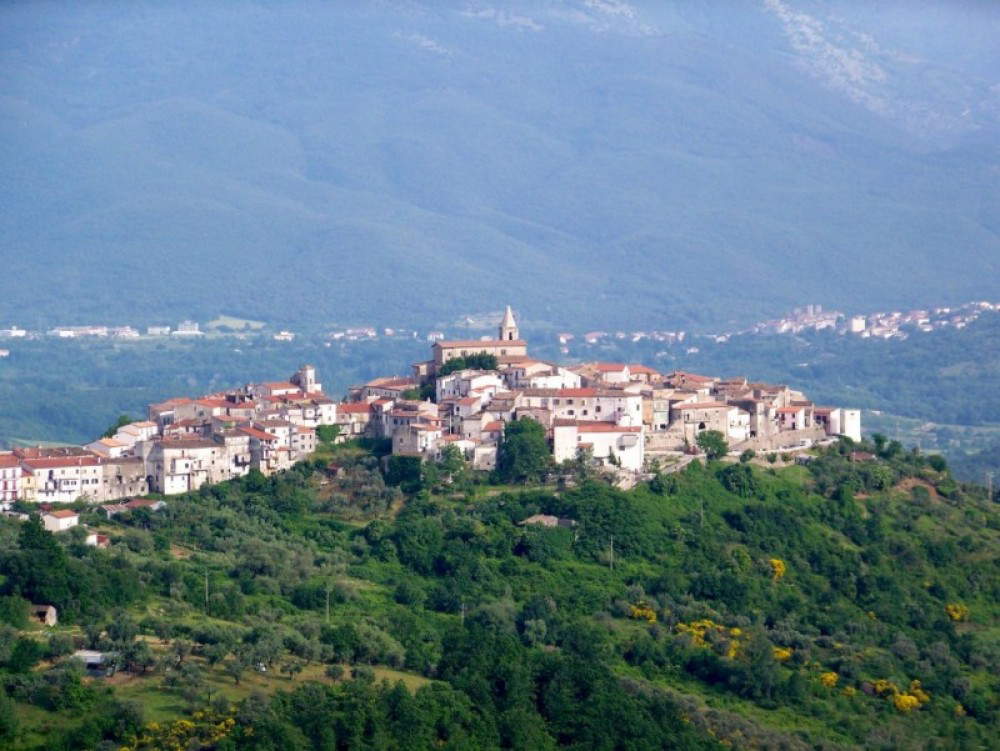 |
| View of Fornelli |
3. Rocchetta a Volturno
Rocchetta a Volturno is divided into two parts, the hamlet of Rocchetta Alta, scenically clinging to the side of a mountain, and Rocchetta Nuova, the 19th-century hamlet, which lies lower than the ancient ncuelo (it was built because the land on which Rocchetta Alta had been built was beginning to collapse, which is why, in the 20th century, the population was moved further down the valley). Despite its small size, Rocchetta a Volturno has a centuries-long history, and important battles were fought in its surroundings during World War II, as recalled by the World Wars Museum, located in the municipal area. Worth seeing are the remains of the medieval fortress (in Rocchetta Alta) and, above all, the important Abbey of San Vincenzo al Volturno, one of the oldest in Italy: in fact, it dates back to the 8th century (although its current appearance is due to later renovations: the last restoration, in the 1970s, gave the building back its 13th-century forms), and inside it preserves frescoes from the Longobard era (a rarity throughout Italy).
 |
| The abbey of San Vincenzo al Volturno. Ph. Credit Francesco Bini |
4. Sepino
Located in the province of Campobasso, it has just under 2,000 inhabitants and the town’s first nucleus dates back to a Samnite settlement in the 4th century BC. The town of Saepinum, a little further downstream from the first settlement, flourished in Roman times, and gained some importance in the early medieval period (Sepino was the seat of a diocese). Worth seeing are the many vestiges of Roman Sepino: the archaeological area of Saepinum, one of the main ones in the region, and the Museum of the City and Territory, in whose itinerary is integrated a visit to the Roman theater of Sepino, one of the best preserved in southern Italy (the museum is housed in the farmhouses built in the 18th century right next to the theater). The village’s ancient churches, such as that of Santa Cristina and San Lorenzo, date mostly from the Middle Ages but were all rebuilt in recent times because of the many earthquakes that have plagued the region.
 |
| The ancient Roman theater of Sepino. Ph. Credit Giulio Lastoria |
5. Pesche
Pesche is situated in a scenic location, perched on the side of a mountain (Mount San Marco), more than seven hundred meters above sea level, with the buildings all attached to each other. The origins are medieval, although not much remains because of the earthquakes that have affected the area. The most important building is the church of Our Lady of the Rosary, built in the 16th century and then extensively remodeled between the 18th and 19th centuries. Also worth seeing is the sanctuary of Santa Maria del Bagno, so called because there were hot springs in the area.
 |
| View of Pesche. Ph. Credit Matteo Di Franco |
6. Bagnoli del Trigno
This is a curious village built among rocks, of uncertain origin (the birth of Bagnoli del Trigno is lost in legend, but the earliest historical records are from medieval times). The village is divided into two parts, one higher up, known as “Terra di sopra,” and one at a lower altitude, “Terra di sotto”-they are joined by narrow streets that climb along the mountainside. Bagnoli al Trigno is dominated by two monuments: the Sanfelice ducal castle, built on the top of the mountain, dating back to the 11th century but remodeled over the centuries (until 1806 it was inhabited by the Sanfelice family, from whom the name by which the castle is known derives: from that date the fortress was abandoned), and the church of San Silvestro, perched on a rocky spur, dating back to the 13th century (a portal from that period is still preserved). The church is located right in the middle of the rock: the bell tower itself has the peculiarity of being partly ... composed of the rock itself. Also worth seeing is the Sanfelice staircase, the modern little road that connects the town to the castle, starting from the church of Santa Maria Assunta (18th century).
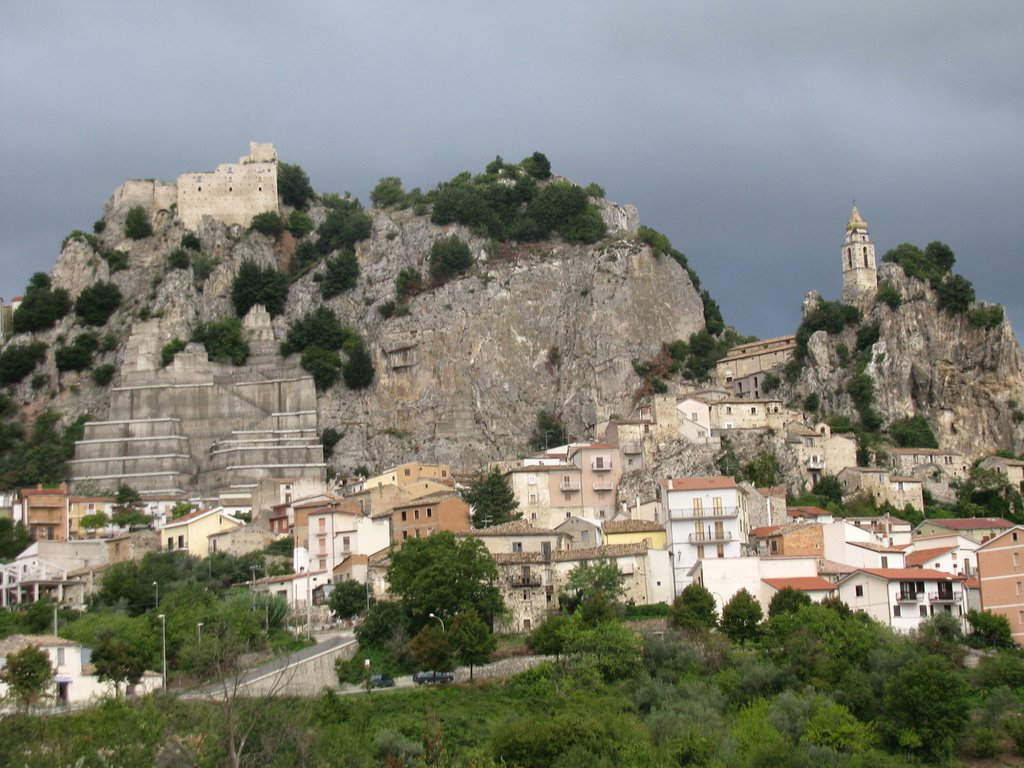 |
| View of Bagnoli del Trigno |
7. Oratino
The name of the town, located in the Biferno valley, derives from its ancient name, “Loretinum”: the origins of the town are obscure, and the earliest documentary records date back to the 13th century (it is likely, however, that Oratino was founded by the Normans). For centuries Oratino was a fief of the local lords, the Giordano family (named dukes in the 18th century), who had their mansion, Palazzo Giordano, also known as Palazzo Ducale, erected here from the 15th century onward, which began as a castle and then, in the 18th century, became a noble residence (today, however, it is privately owned). On a spur of rock you can see the remains of the medieval castle that collapsed in the 1456 earthquake, and in the village also worth seeing are the church of Santa Maria Assunta (where you can admire a 1791 fresco by Ciriaco Brunetti) and the 18th-century church of Santa Maria di Loreto.
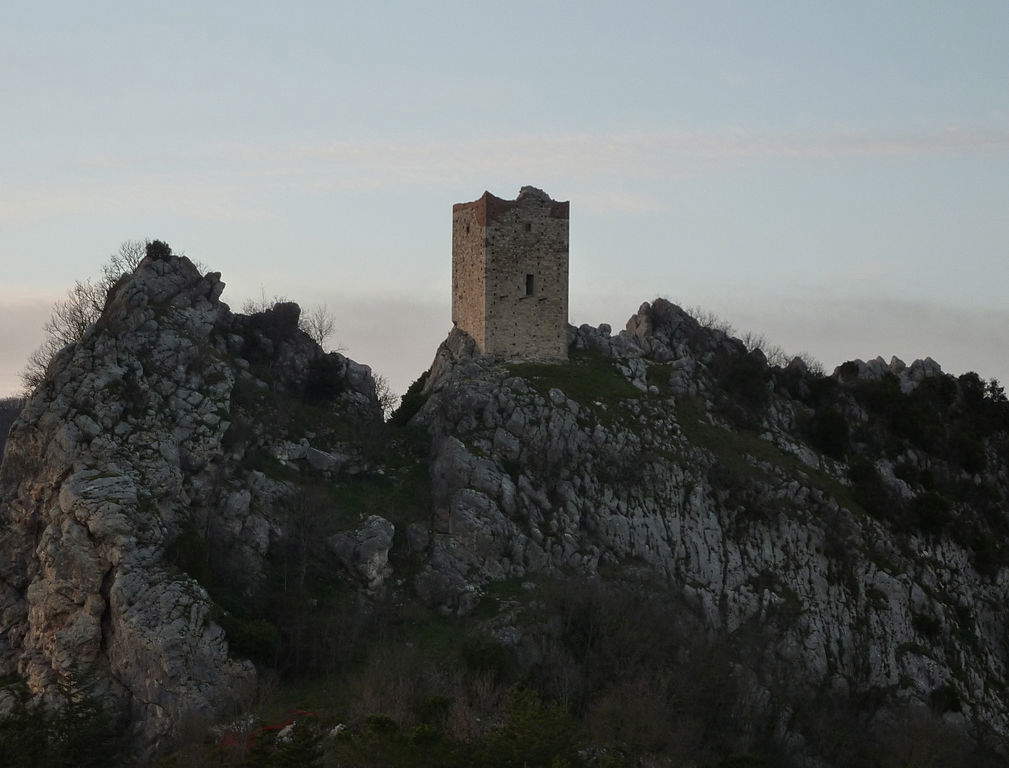 |
| Oratino, the remains of the medieval castle |
8. Frosolone
It is in the province of Campobasso, in an area inhabited since ancient times by Samnite peoples. However, the present village was born in the Middle Ages, on a hill surrounded by countryside and pastures. Worth seeing are the church of Santa Maria Assunta, which is notable for its sumptuous Baroque façade (inside are works by Giacinto Diana), the church of Santi Pietro e Paolo (where there are sculptures by Amalia Duprè, an important sculptor who was the daughter of Giovanni Duprè, one of the major Italian sculptors of the mid-19th century, and was long active in Molise), and the Museo dei Ferri Taglienti (in Frosoline in ancient times the activity of blade makers flourished). The Baronial Palace began as a castle and was later transformed into the residence of the barons who ruled the fief of Frosolone. The town is also a starting point for nature trekking: don’t miss the spectacular rock formations around the village.
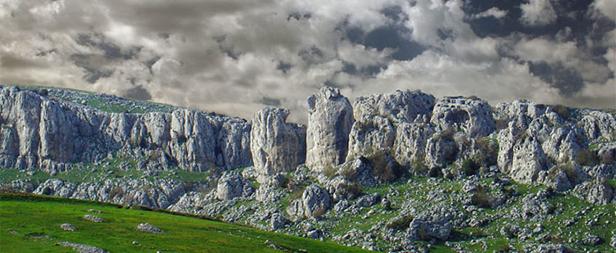 |
| The mountains of Frosolone |
9. Ripalimosani
An ancient Norman village, it is a mountain hamlet built on top of rock and has based its livelihood for centuries on hemp processing and the manufacture of strings for musical instruments: in fact, the strings that would make instruments such as mandolins and guitars play were made in Ripalimosani. Even today, the Mandolin School of Ripalimosani continues to keep alive the tradition of mandolin players in the village. Worth seeing are the mother church of Santa Maria Assunta (of medieval origin, but rebuilt in the Renaissance: this is what it looks like today externally, while the interior is Baroque) and the convent of San Pietro Celestino, where a copy of the Holy Shroud kept in Turin, made in the 16th century, is kept. Ripalimosani is also home to the Riccardo Marquis Palace, which still retains many of the rooms of the nobles who lived there.
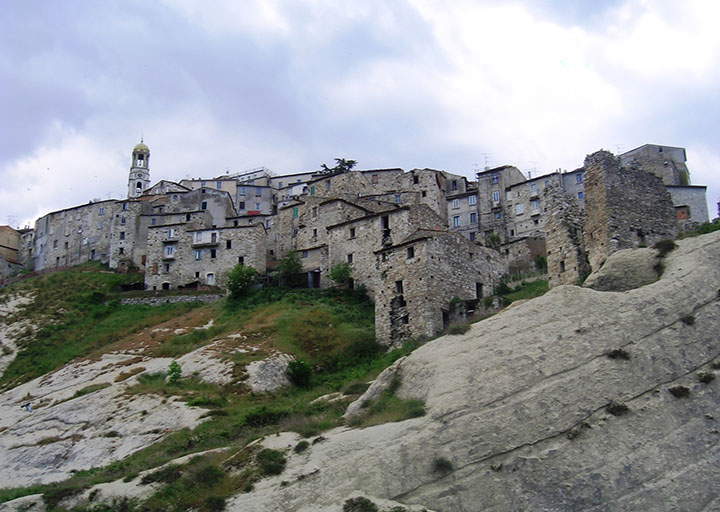 |
| View of Ripalimosani |
10. Castellino del Biferno
In ancient times it was called “Castello di Lino” (the name by which Castellino del Biferno is still known in the local dialect), probably after the name of an ancient feudal lord. Another village of Norman times, it was badly damaged by the 2002 San Giuliano earthquake, so much so that some buildings were torn down (earthquakes have always affected the village, tnto the extent that it is also known as “the village that moves”). However, reconstruction has affected many of the old buildings, such as the 18th-century mother church of San Pietro in Vincoli, which reopened for worship in 2013. Around the village it is possible to visit the Colle di Toro nature oasis, one of the most visited in the region. Castellino del Biferno is also known for the very curious tradition of the “Pizzicantò”: every year, on June 12, along the streets of the village the inhabitants climb on top of each other to create strange ... human pyramids composed of thirteen people, who then parade through the streets of the village.
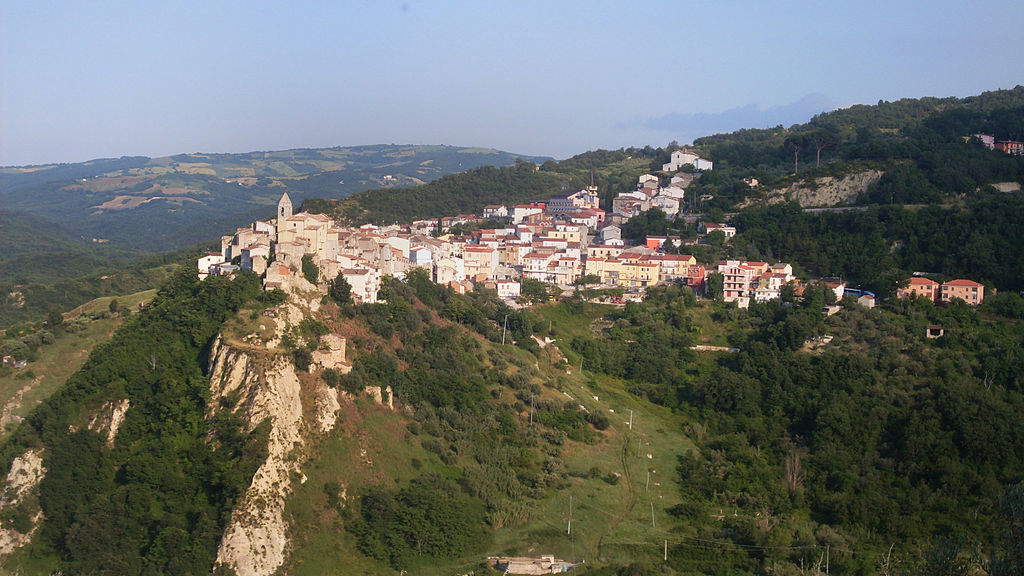 |
| View of Castellino del Biferno |
 |
| Ten villages to visit in Molise |
Warning: the translation into English of the original Italian article was created using automatic tools. We undertake to review all articles, but we do not guarantee the total absence of inaccuracies in the translation due to the program. You can find the original by clicking on the ITA button. If you find any mistake,please contact us.